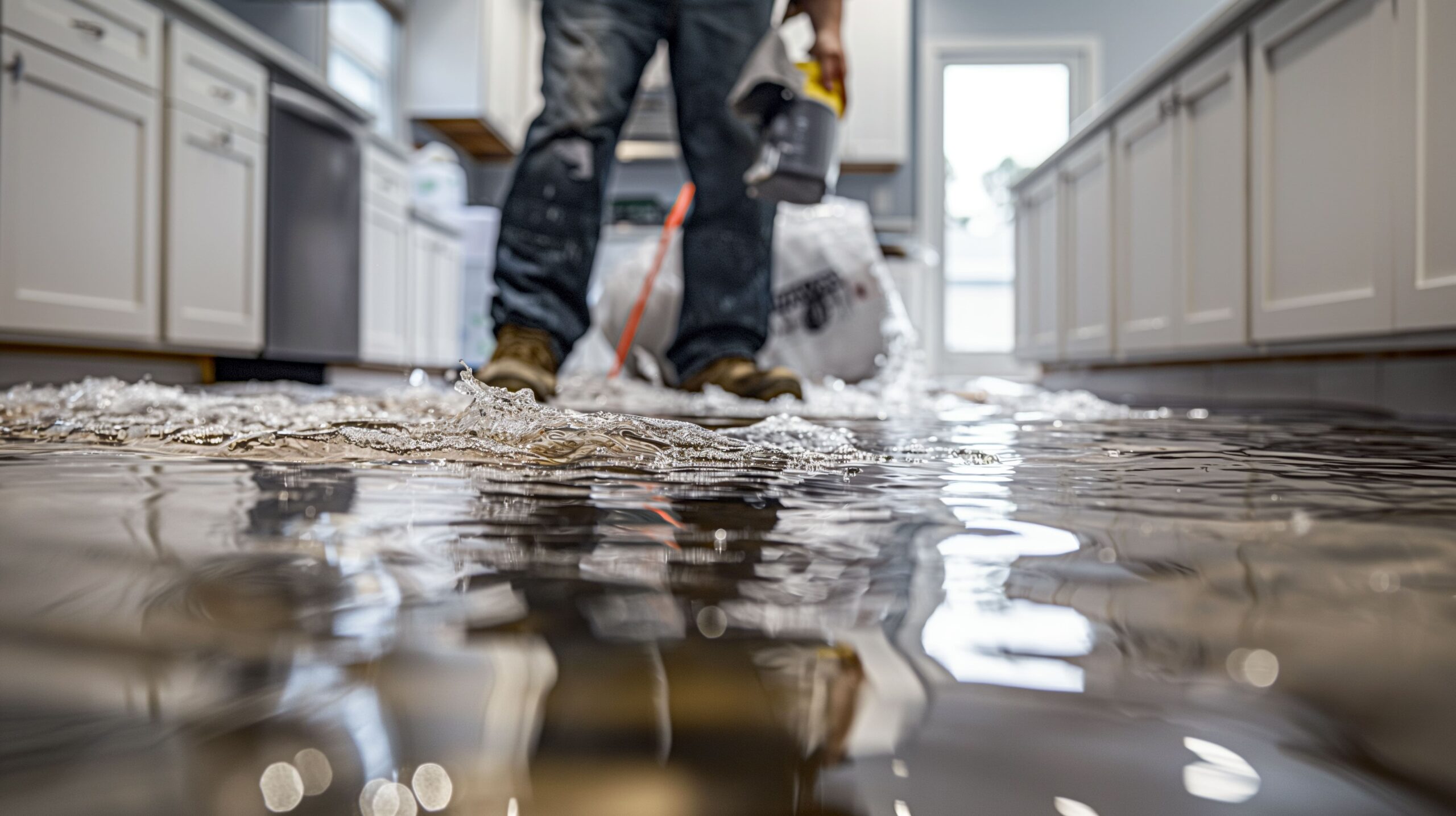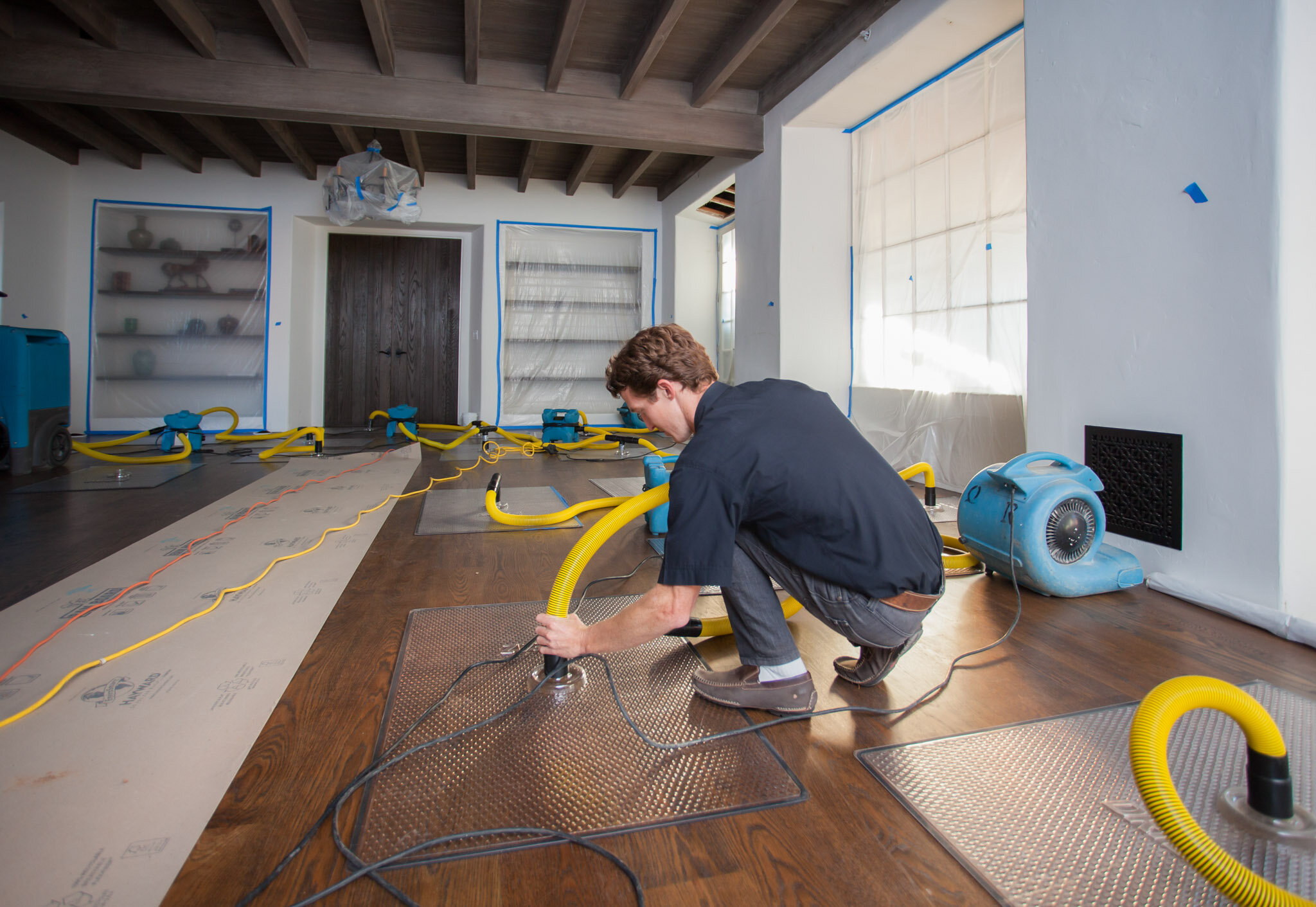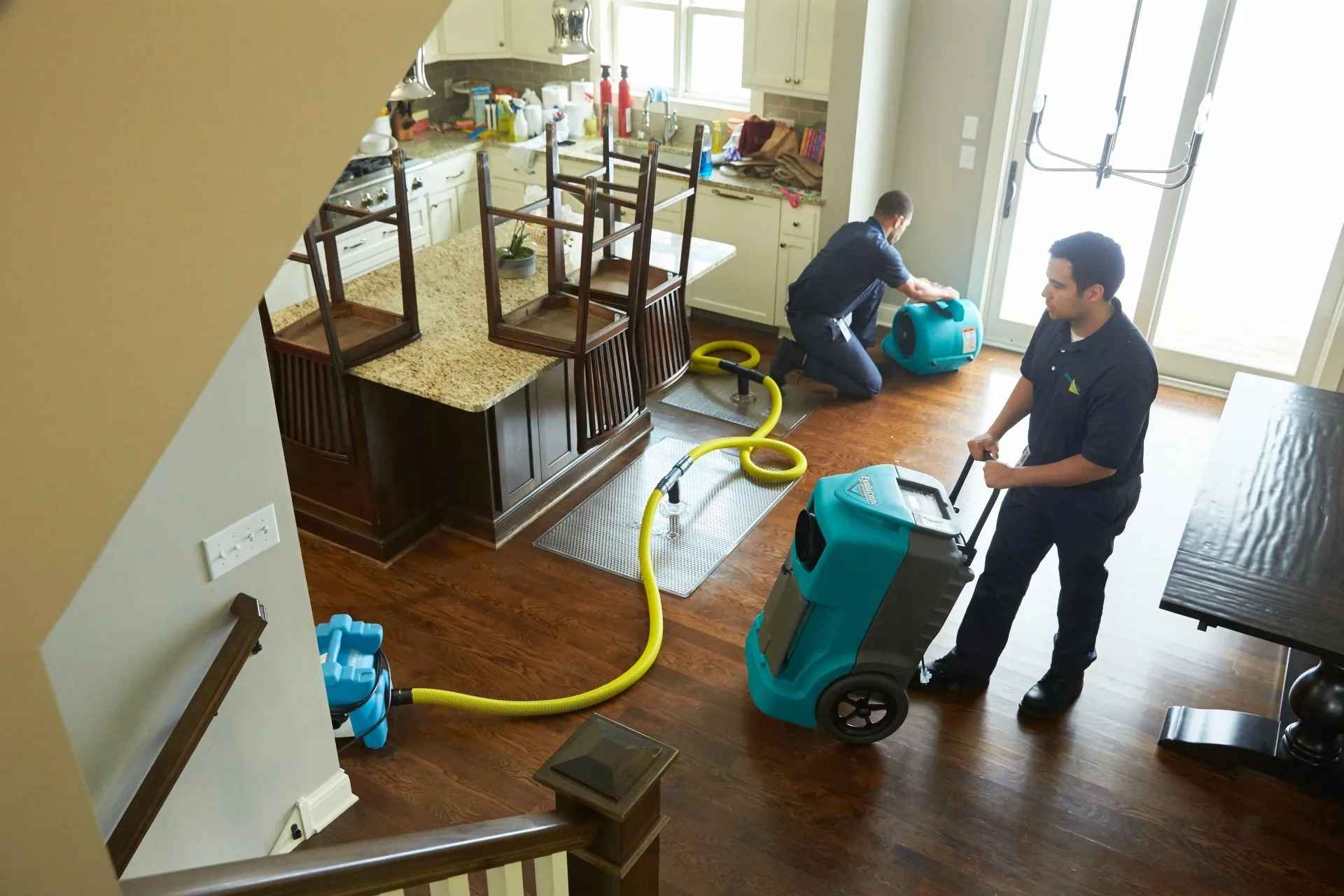Water Damage Restoration 101: Understanding the Process and Cost
Water damage can strike all of a sudden, leaving house owners in a state of confusion. Understanding the reconstruction process is crucial for effective recovery. From reviewing the damage to choosing the appropriate service supplier, each action affects the general end result and cost. Aspects such as the kind of water damage and seriousness likewise play a significant function. What are the details techniques used in reconstruction, and exactly how can one prepare for possible costs?
Kinds Of Water Damage

Preliminary Evaluation and Inspection

Water Removal Techniques
Complying with the initial evaluation, effective water removal techniques are utilized to alleviate damage and avoid more problems. These strategies include using customized equipment such as industrial-grade vacuum cleaners and submersible pumps - Water Extraction And Drying. The choice of technique relies on the volume of water present and the kind of products affected. For standing water, submersible pumps are generally used for quick elimination, while vacuum cleaners are optimal for extracting water from carpets and upholstery. Furthermore, advanced techniques like water removal floor coverings might be employed for hard-to-reach areas - Water Damage Restoration. The goal is to eliminate as much water as feasible, minimizing the potential for mold growth and structural damage. Prompt and effective water extraction is necessary in the total water damage restoration procedure
Drying Out and Dehumidification Process
As soon as the water removal is full, the drying and dehumidification procedure comes to be critical to recovering the affected location. This phase normally uses industrial-grade dehumidifiers and air moving companies to properly decrease moisture degrees. The dehumidifiers reel in moist air, removing excess humidity, while air movers distribute air to accelerate evaporation. Tracking tools is typically used to track moisture and temperature level degrees, ensuring perfect drying conditions. The period of this procedure can differ depending on the extent of the water damage and environmental aspects. It is necessary to extensively dry all influenced products, including wall surfaces, floor covering, and home furnishings, to prevent mold development and architectural damage. Appropriate implementation of this action is essential for an effective reconstruction end result.
Cleaning and Disinfecting Afflicted Areas
As soon as the drying procedure is total, a detailed preliminary assessment and examination of impacted areas is crucial to recognize contamination levels. Effective cleansing techniques and suitable products need to after that be utilized to get rid of debris and discolorations. Sanitization and sanitation methods are crucial to guarantee that harmful pathogens are gotten rid of, restoring the room to a secure condition.
Initial Evaluation and Inspection
Prior to beginning any type of remediation initiatives, a detailed preliminary assessment and examination of the impacted areas are essential for efficient cleansing and sterilizing. This procedure includes recognizing the degree of water damage, determining the resource of the water intrusion, and assessing the products influenced. Examiners usually try to find indications of mold and mildew development, architectural honesty issues, and damaged possessions. The evaluation likewise includes checking moisture levels making use of specialized devices to ensure no covert water pockets remain, as these can result in additional issues. Documenting the findings is important for planning the following action in the restoration procedure. A thorough first evaluation allows remediation specialists to design a targeted strategy for reliable cleaning and sanitizing, inevitably lessening damage and health and wellness dangers.
Cleaning Techniques and Products
Reliable cleansing and sanitizing of water-damaged areas require a selection of products and techniques tailored to the details products influenced. For permeable surface areas like drywall and carpets, removal techniques are important to eliminate excess wetness, complied with by deep cleansing with specialized detergents. Non-porous materials such as tile or steel can be cleaned up making use of commercial-grade cleansers that properly get rid of impurities. Vapor cleansing is one more efficient technique, particularly for carpets and furniture, as it utilizes high temperatures to eliminate microorganisms and mold and mildew (Water Damage Restoration). In addition, eco-friendly items are significantly preferred for their security and efficacy - Water Damage Restoration. Ultimately, picking the proper cleaning methods and items not only assures prompt tidiness however likewise aids in preventing more damage and health dangers associated with water breach
Sanitization and Disinfection Techniques
When dealing with water damage, correct sanitization and disinfection methods are crucial to guarantee the security and wellness of the damaged environment. After preliminary cleansing, surface areas must be treated with suitable anti-bacterials to remove virus, mold, and germs that grow in wet conditions. Common techniques include the use of EPA-approved chemical anti-bacterials, which can be applied through spraying or wiping methods. Furthermore, ultraviolet (UV) light systems can successfully sanitize locations by neutralizing bacteria without severe chemicals. The option of approach typically relies on the sort of materials impacted and the level of contamination. Ultimately, complete sanitization not only restores a risk-free space yet also assists protect against future health risks connected with lingering dampness and mold and mildew development.

Repair Work and Restoration Options
Assessing the damage caused by water exposure is essential for determining the appropriate repairs and restoration options. House owners might encounter numerous concerns, consisting of harmed drywall, deformed flooring, and endangered architectural elements. Depending on the extent of the damage, repair work may entail changing sections of drywall, mounting brand-new flooring, or reinforcing architectural beam of lights. In situations of severe damage, full substitute of damaged products may be required. Additionally, specialist restorers frequently recommend using dampness meters to examine hidden dampness levels before determining on the very best strategy. It is necessary to act quickly to prevent mold and mildew growth and more degeneration. Picking the appropriate choices not just restores the home yet also assures lasting safety and security and functionality.
Aspects Affecting Restoration Expenses

The extent of water damage directly influences the restoration sets you back house owners can anticipate to incur. Aspects such as the resource of the water, the duration of exposure, and the damaged materials substantially influence prices. For example, tidy water damage from a damaged pipeline is normally much less costly to bring back contrasted to damage created by sewer. Furthermore, the degree of contamination determines the demand for specialized cleaning and disposal services, even more boosting expenditures. Geographical area additionally plays a role, as regional labor prices and schedule of remediation solutions can differ. The seriousness of the reaction affects prices; quicker treatments usually lead to here lower overall expenditures by avoiding additional damage. Understanding these elements is vital for homeowners when approximating repair costs.
The 3 main types of water damage are classified based on contamination levels: tidy water, gray water, and black water. An extensive preliminary assessment and examination are crucial steps in the water damage reconstruction process. For standing water, completely submersible pumps are normally utilized for quick removal, while vacuum cleaners are suitable for drawing out water from carpetings and upholstery. The level of water damage directly affects the remediation costs property owners can anticipate to incur. Tidy water damage from a busted pipeline is typically much less expensive to restore contrasted to damage triggered by sewage.